
You may have heard of Japan’s so-called “penis” festivals (yes, plural) – the most famous being the Kanamara Matsuri, visitable easily from Tokyo. But what are these actually about?
Attending festivals (祭り, matsuri) is a great way to use your Japanese language skills and participate in the culture. I visited two during my years living in Japan: the Kanamara Matsuri in Greater Tokyo and Honen Matsuri in Greater Nagoya. In this article, I’m going to tell you all about these two festivals, what happens, and evaluate which one I prefer. (Keep in mind that details are always subject to change.)
Before I go into this topic too much, in Japan, these events are actually considered to be family-friendly. They are fertility festivals, not “Japanese sex festivals.” But keep in mind that there are some rather explicit photos below.
Also, here is the vocabulary I’ll go over in this article:
| Japanese | Romaji | English | Audio |
|---|---|---|---|
| 祭り | matsuri | festival | |
| 神道 | Shintou | Shintoism | |
| 仏教 | Bukkyou | Buddhism | |
| 神社 | jinja | shrine | |
| お寺 | o-tera | temple | |
| 草食 | soushoku | grass-eating (referring to a population passive about sex) | |
| お神輿 | o-mikoshi | portable shrine | |
| 絵馬 | ema | wooden prayer tablets | |
| 朱印 | shuin | commemorative stamp from a shrine/temple | |
| 餅 | mochi | rice cake | |
| 大根 | daikon | a large Japanese radish |
Where to Attend a Penis Festival in Japan
So first off, let’s go over what Japanese cities have a penis festival.
The Kanamara Matsuri takes place in Kawasaki (川崎市, Kawasaki-shi), the capital of Kanagawa Prefecture (神奈川県, Kanagawa-ken), which is just about 30 minutes outside downtown Tokyo. Specifically, it takes place at Kanayama Shrine (金山神社, Kanayama Jinja). This one is the more famous one, probably due to its proximity to Tokyo and Yokohama, the two biggest cities in Japan.
The Honen Matsuri takes place in the town of Komaki (小牧市) due north of Nagoya (名古屋). You’ll go to Tagata Shrine (田縣神社, Tagata Jinja) for this one. But don’t be fooled – this is also a very well-attended festival! Also, I’d be remiss if I didn’t suggest you also visit Ogata Shrine (大縣神社, Oogata Jinja), a “Vulva Shrine,” while you’re in the area.
When to Attend the Penis Festivals in Japan
So, when is the penis festival in Japan?
The two are actually only separated by a couple of weeks. The Kanamara Matsuri takes place on the first Sunday of April each year, and the Honen Matsuri occurs on March 15. Technically they are both similar in origin – fertility festivals, so it is no coincidence that they both take place at the beginning of spring.
Actually, there are a few more fertility festivals in Japan, but these are the two main ones.
The Language of These Two Fertility Festivals in Japan
Kanamara Matsuri (かなまら祭り, Kanamara Matsuri) is always written in hiragana, one of Japanese’s phonetic alphabets, so without the kanji it’s a bit difficult to be certain about the etymology of the name. Kana possibly comes from a reading of 金, which means “gold.” Mara might come from the Buddhist term of the same pronunciation 魔羅, which means an “obstacle to Buddhist practice.” This is actually a vulgar slang term for “penis.”
On the flip side, the Honen Matsuri (豊年祭, Hounen Matsuri or also Hounen-sai) is written in kanji, so the meaning is clear. It literally means “bountiful year festival.”
As you can see, just by looking at the names, the vibes for the two festivals–as scandalous as we foreigners (and many Japanese as well nowadays) may see them to be–seem to be pretty different.
Before I go into the meat of this post, I really do need to give a short briefing about what is considered “scandalous” and “erotic” and “normal” in the Japanese context. We really need to look at pre-Westernized Japan to put this into context. That’s up next!
What is a Japanese Fertility Festival?
A Japanese fertility festival is a traditional Shinto celebration that honors fertility, reproduction, and abundance. They typically feature parades with phallic symbols (Japan’s patriarchal culture means that you’ll have grand penis festivals rather than vulva festivals), shrine rituals, and various activities aimed at promoting good harvests and healthy offspring.
Now, I want to give you a bit of historical and cultural context. Before the mid-1800s, when the US forced Japan to engage with the outside world after over 200 years of almost total isolation, Japan was relatively pretty sex-positive – at least in comparison to most of the Victorian-Era West.
Now, both of these festivals pertain to Shintoism (神道, Shintou), Japan’s native religion. By the way, we easily know this because shrines (神社, jinja) are Shinto, and temples (お寺, o-tera) are Buddhist (仏教, Bukkyou). Shinto especially was pretty open about sexuality and letting the population grow and be free and one with each other.
So in much of Japanese society, sex and sexuality used to be considered just another facet of life. This openness was especially prevalent in smaller villages, which is where some of these festivals and shrines originate.
There is no denying that is a clear paradox in modern Japanese attitudes towards sexuality. Japan’s sex industry aimed at men is highly profitable and receives worldwide attention. On the other hand, the government is stressed about Japan’s rapidly declining population and there is a prominent so-called “grass-eating” (草食, soushoku) male (and female) population disillusioned with and disinterested in sex.
However, remember that this is all, in the history of the ancient country, a very recent phenomenon and that the origins of these two festivals predate all of this.
Now, for the real crux of this post: Which penis festival is better?
What Happens at a Japanese Penis Festival?
The main event at both the Kanamara Matsuri and the Honen Matsuri is the parade of the giant penis.
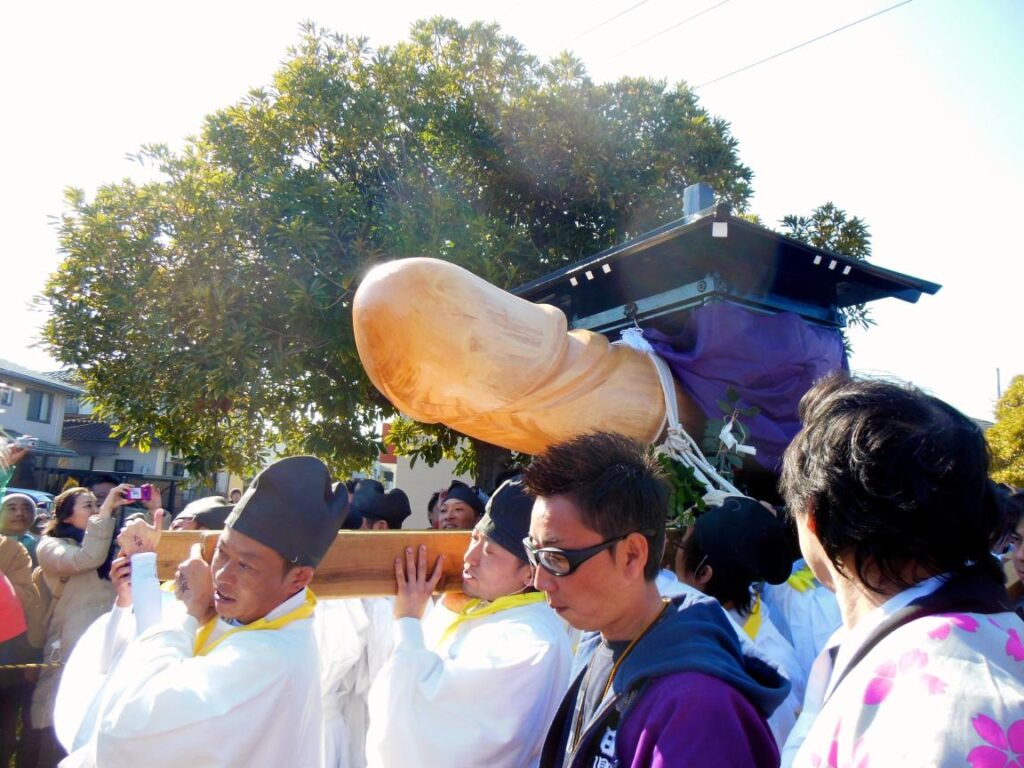

The Honen Matsuri parade takes place along a certain natural environment leading to shrine grounds (although the path of the parade changes depending on if it is an odd- or even-numbered year). The path is long with ample open space for people to gather and watch the procession, which includes some shrine workers displaying very detailed penis flags, shrine maidens carrying wooden penises the size of babies (even more fortune to you if you get to rub those), and the main hauling of the giant, amazingly detailed wooden phallus on a portable shrine (お神輿, o-mikoshi). Once the penis is safely at its intended destination, jolly workers hand out free cups of sake.
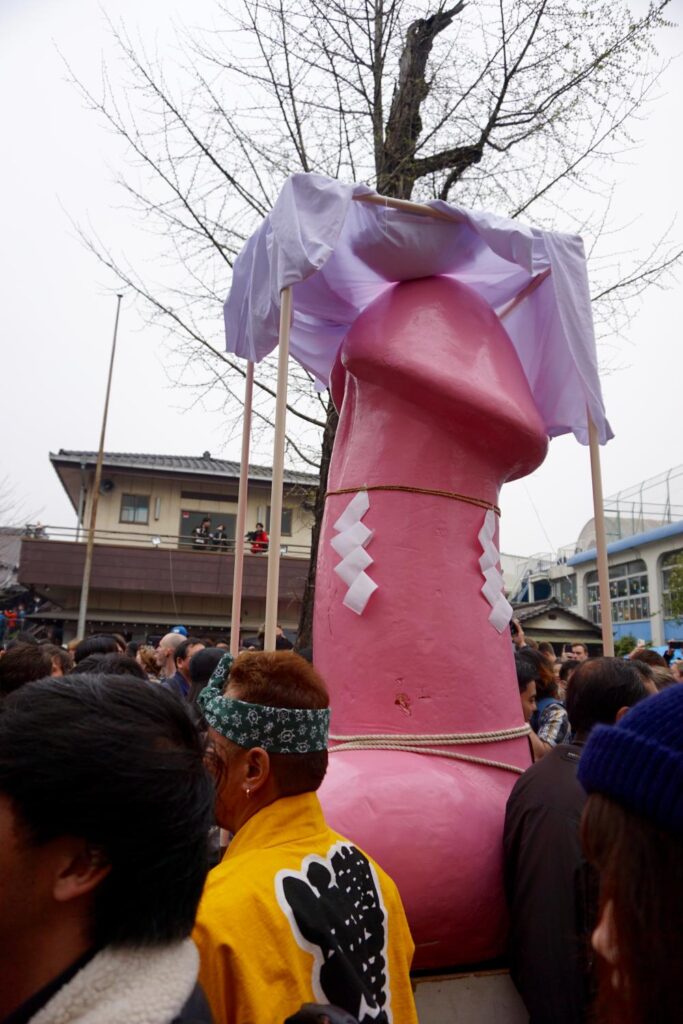

At the Kanamara Matsuri, the parade moves three phallic floats. Unfortunately, I missed the actual parade for Kanamara because I was waiting in a line for my friend to get a collectible shrine stamp (朱印, shuin). By the time it started, I had also distracted myself with carving a penis into a large radish (more on that below).
The Grounds of the Penis Festivals
Honestly, the Honen Matsuri is better in these regards. Since it takes place in a small town right outside a major hub, there is plenty of space to move around. The shrine itself is pretty small, and you definitely need to get there early in order to pat the penis and rub the balls at the main shrine, but it has ample space.
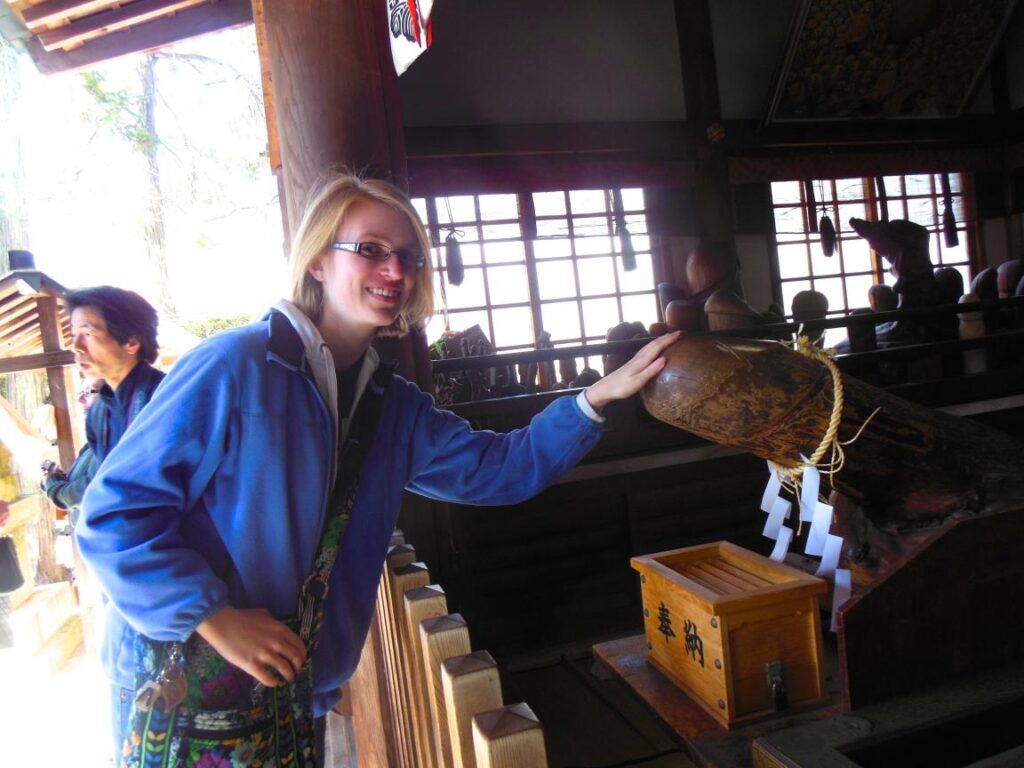

Plus, the shrine itself is not gated, so it is a very free, open space. The main parade (described below) takes place in an open area lined with trees and grass, and while you might have to elbow a few people, you can get a good viewing spot.
On the other hand, the Kanamara Matsuri tends to be densely packed. The shrine is tiny and gated, meaning you need to line up to see much of it. When I went, it simply had no space, and workers were roping off areas to limit the number of people visiting different sections of the shrine. I gave up buying souvenirs because the lines were constantly so long.
Sure, being right outside touristy Tokyo makes it convenient, but it is difficult and frankly a bit stressful to move around. Expect significantly longer lines to see aspects of the shrine and festivities and to buy souvenirs at Kanamara Matsuri.
What to Buy at the Penis Festivals
Again, I think the Honen Matsuri does better than the Kanamara Matsuri in this regard. For the Honen Matsuri, vendors greet you at the station and are dotted along the path to the festival area, at which rows and rows of stalls selling food and knick-knacks are lined up. You can buy phallus-carved sticks, statuettes of men and women with ahem a surprise to be revealed when you turn them over and look under their robes, and more.
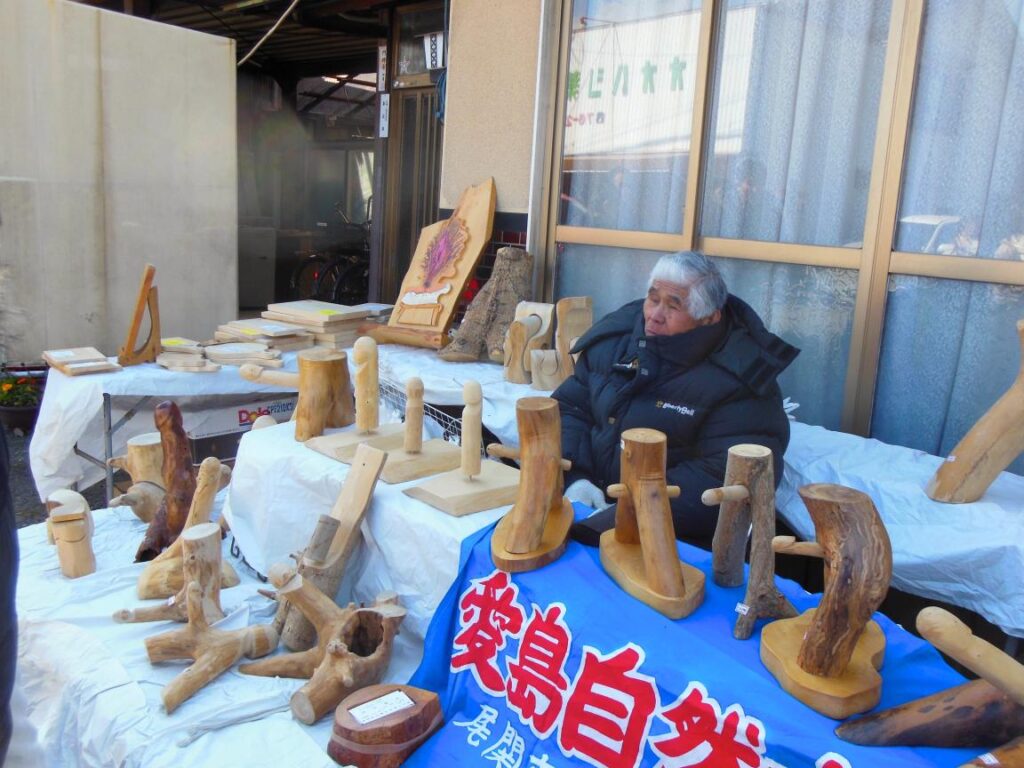

Eat your choco-banana with the tip slightly carved and little cookie balls stuck on the bottom, your “grilled precious treasure” (their special term for a hot dog), and penis- (and a few vagina-) shaped hard candies:
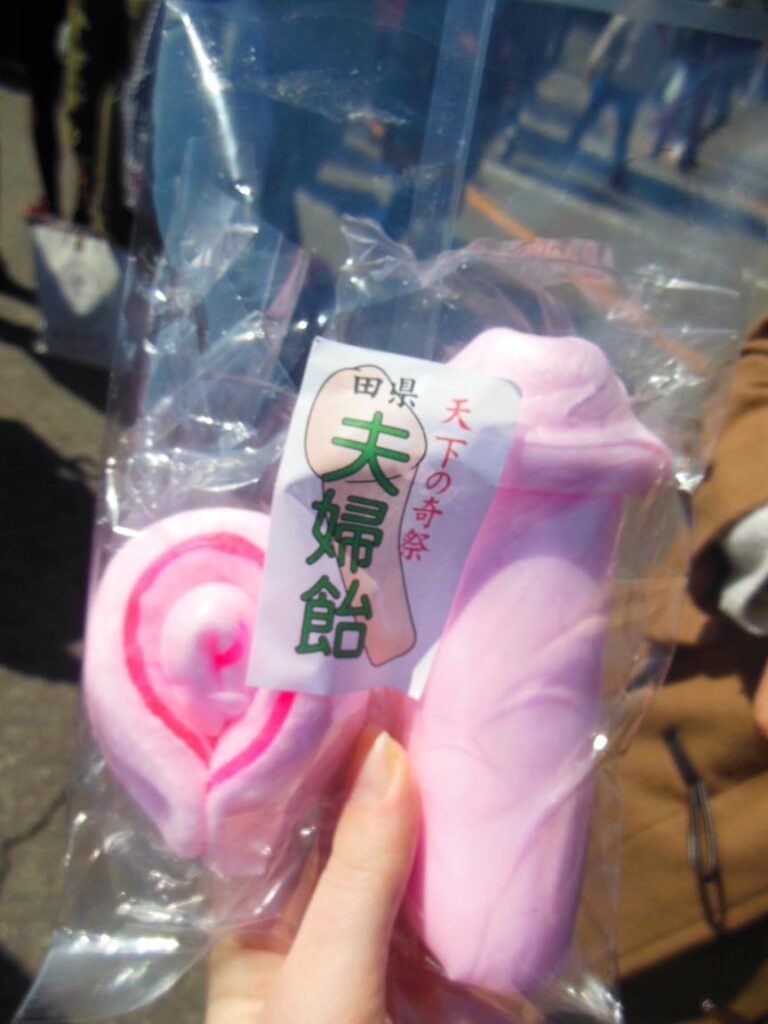

At the Kanamara Matsuri, the vendors were few. Only one was selling phallic-shaped hard candy, and there were only about five other tents within the grounds selling anything.
What Do the Penis Festivals Look Like?
Again, I prefer the Honen Matsuri over the Kanamara Matsuri in terms of decoration. It’s very in-your-face that it’s a fertility shrine because thoroughly it’s decorated with penises of all sizes. They display the phallus o-mikoshi before the parade. In addition, there is another smaller (but still large) phallus statue and some big stone balls that are said to bring you good luck if you rub them.
The shrine has a sense of humor. Even the ema (絵馬) – decorated wooden boards on which you write a wish – are ostentatiously true to the theme:
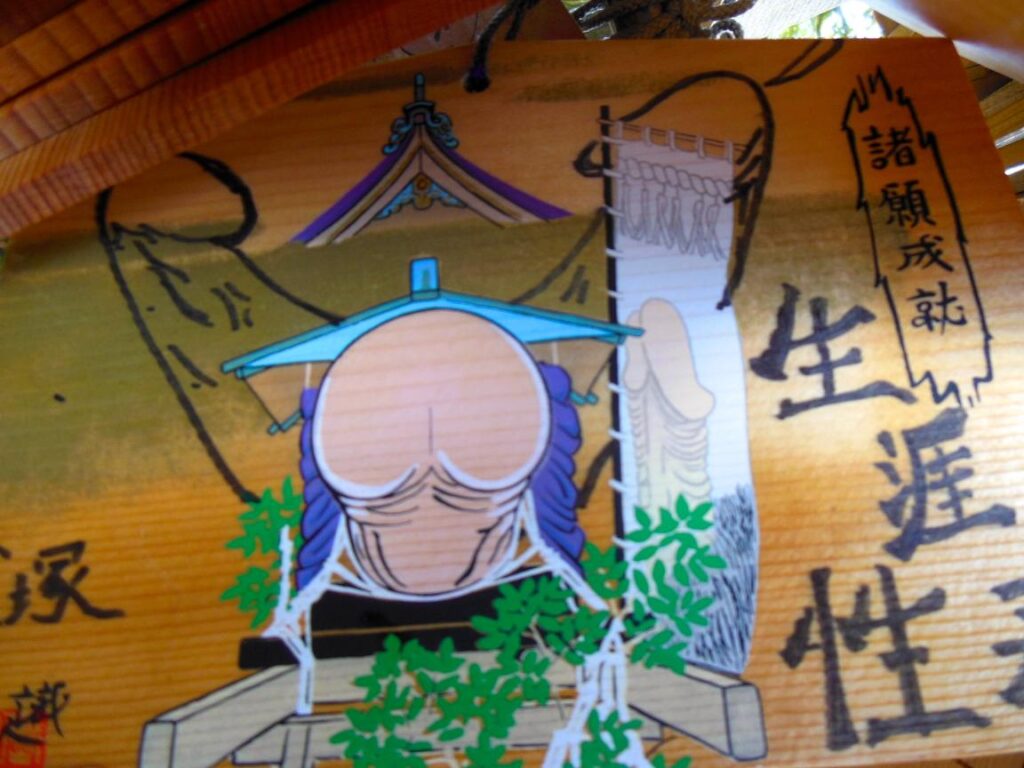

In contrast, the Kanamara Matsuri was much less bold. You can see their bubblegum-pink penis on the float on the shrine grounds. And honestly, compared to the Honen Matsuri’s float, it is a bit lacking in details. But otherwise, the shrine is surprisingly almost genital-free.
Their structure to hang the ema had a few penises protruding from under the eaves, but the ema were less bold:
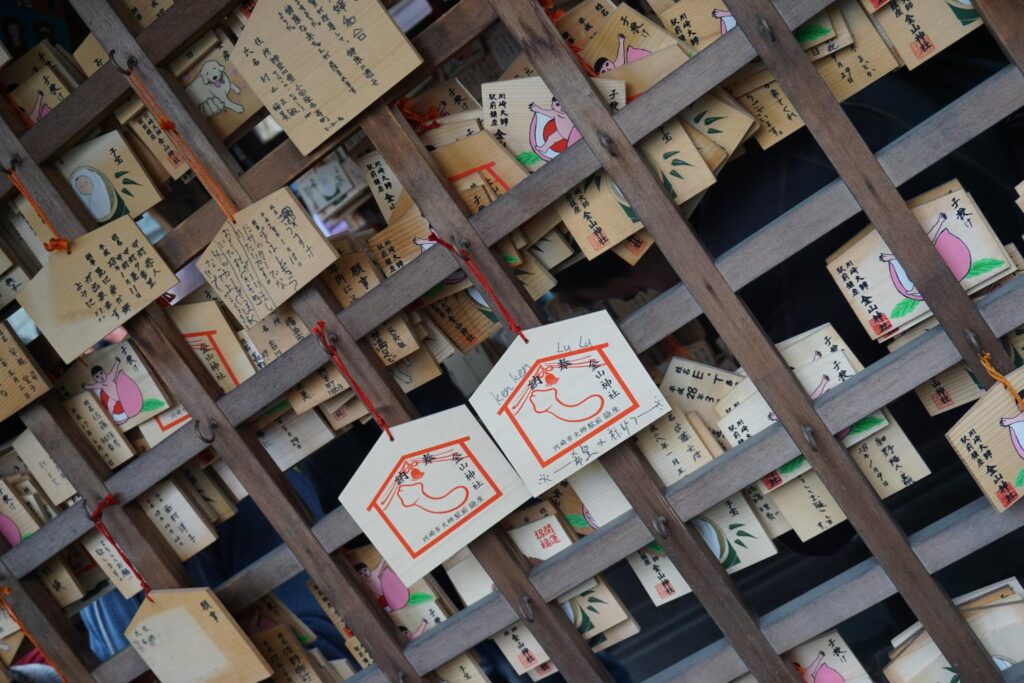

However, I did see the classic “see no evil, hear no evil, speak no evil” monkey trio with two additions: “transmit no evil” and “receive no evil” (referring to STIs), which was a nice touch.
Extra Activities and Events at the Japanese Penis Festivals
As you may be able to tell, I was getting pretty frustrated at the Kanamara Matsuri when I went. But the festival really shone in this final evaluation.
Besides eating and watching the parade, the final main event of the Honen Matsuri was the annual mochi (餅, rice cake) throwing. As Wikipedia describes it, “Everyone then gathers in the square outside Tagata Jinja and waits for the mochi nage, at which time the crowd is showered with small rice cakes which are thrown down by the officials from raised platforms.” As I describe it: A horde of people desperately push and shove each other to get a brick of hard, dried mochi, which are dangerously pelted from meters (or yards, whichever you prefer) above you. You can’t escape once you’re corralled in the mochi throwing ring, and if you’re not aggressive or big enough, good luck getting your hands on one. It was honestly scary and not worth it in my opinion.
On the other hand, at the Kanamara Matsuri, there was a little old lady who made my day. She was sitting with a giant pile of daikon (大根, large Japanese radishes) carving them into – you guessed it – penises. And while I can’t guarantee that she is there every year, she told me she’s been doing this for 30 years.
I had just happened to come across her while waiting for my friend to get ever closer in the shuin line, and I assumed you had to wait in a large line or pay some fee to make a carving, or that maybe she carved them for you. Well was I wrong, because she shouted out to me to carve one for free. She not only asked, but she really pushed that anyone around her little territory carve one, as she shouted out time after time at startled Japanese and foreigners in an enthusiastic mix of broken English and Japanese that “this isn’t just an event to watch–you have to participate!” Bless.
I decided to give it a go and waited for a few words of instruction. However, it seems to be against every fiber of her being to give instructions regarding how to carve a penis from a radish.
“Where do I cut it from?” I asked of the radish top. “Wherever you like,” she said with a wink. (Later she took the green tops and announced that they look like pubes, demonstrating how right she was by sticking the radish tops and putting them over her crotch area. Bless her again.)
Her only advice? I’ll quote directly what she said to a couple of foreign-looking women as they took up their radishes after me: “You! Boyfriend!” [Commence a lot of hand whirling and swirling above the head to convey “use your imagination/memory.”]
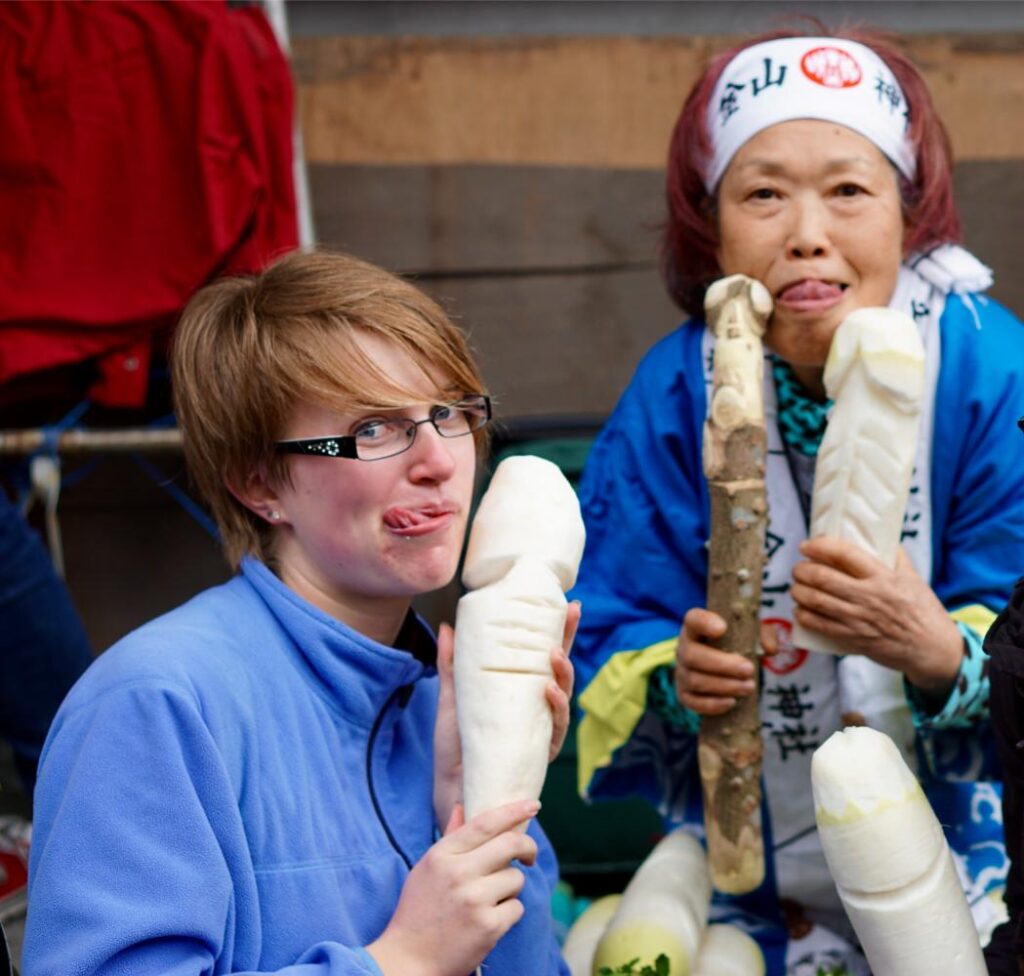

What happens to the daikon after they are carved, you may be wondering? “We will take this pile and offer them to the main shrine,” she explained. “Then they will turn into gods!”
Which Japanese Penis Festival Should You Go to? My Final Thoughts
Clearly, I enjoyed the Honen Matsuri much more than the Kanamara Matsuri, although that is not to say that the latter isn’t worth going to. I would recommend spending the whole day at the Honen Matsuri with a group of friends – there is plenty to do and see (people watching is, as expected, excellent at both), and there’s enough food to keep you satisfied until the end. Maybe watch the mochi throwing from the sidelines, however.
The Kanamara Matsuri isn’t without its perks, but I would recommend stopping by as early as possible – maybe around 9 in the morning (don’t even bother getting there after 11) – with a very small group of friends. The area around the shrine is really interesting and bustling in any case. There is an exquisite temple in the park just a few blocks away that also has a few food stalls and a spillover of interesting people perfect for watching.
I would definitely go back to Honen Matsuri again when I’m in the area; I can’t say I’d say the same for the Kanamara Matsuri, but I am, in any case, glad I went once to check it out.